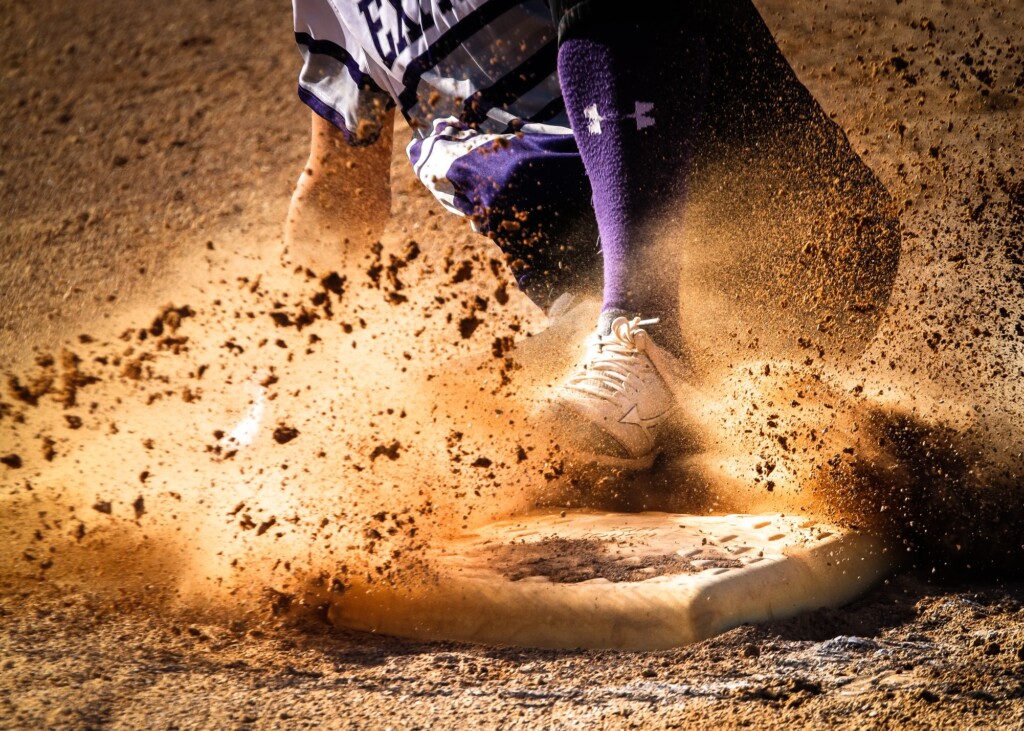
In a rare result, the BC Supreme Court found no liability on any defendant after a spectator was injured by a foul ball at a children’s baseball game, calling it an accident and finding such foul balls were simply obeying the laws of gravity. The Court also stated that these types of situations do not generally create a potential for serious injury.
While watching his son play baseball at Inter River Park in North Vancouver (the “Park”), Mr. Rivers (the “Plaintiff”) was struck by a foul ball, which he claimed resulted in a head injury. The Plaintiff sued the District of North Vancouver (the “District”), Little League Baseball Canada (“Little League”) and the Mount Seymour Little League Association (“Mount Seymour”), who in return applied for summary dismissal of the claims against them.
The baseball diamonds where the accident occurred were configured in a back-to-back fashion, with the third base line of field D (“Field D”) running parallel to the first base line of field C (“Field C”). The Plaintiff had been sitting in the front row of the bleachers on the third base side of Field D (the “South Bleachers”) with his back to Field C. He was watching his son, who was up to bat, when a foul ball from a game being played on Field C, struck him on the head.
The District owned the Park, had constructed the baseball diamonds and was responsible for all the maintenance of the facilities at the Park. Allegations against the District included an alleged failure to keep and maintain the premises in a manner that ensured the safety of the spectators. Mount Seymour was an unincorporated association whose little league games were played at the Park. The allegations were that it failed to warn spectators of the risk of foul balls leaving the field of play. Both the District and Mount Seymour (collectively the “League Defendants”) were found to be “occupiers” pursuant to the Occupiers Liability Act. Little League was a non-profit organization with headquarters in Ottawa and was found at no time to have been in possession or control of the Park and therefore was found not to be an “occupier”. The claim against them was dismissed quickly.
The evidence before the court regarding foul balls leaving the field of play at the Park varied. The Plaintiff submitted affidavit evidence from one witness who stated she sat with an umbrella open while watching games specifically to guard against being struck by a foul ball. However, the court held that this evidence was somewhat exaggerated. The League Defendants filed several affidavits from coaches and assistant coaches, all of whom said foul balls clearing backstops was common in senior boy’s baseball games and occurred at virtually all baseball diamonds. All of the witnesses agreed there was an informal warning system in place which involved yelling “heads up” whenever a foul ball left the field of play. None of the witnesses had seen anyone struck by a foul ball in the past and the District had no record of anyone being struck by a ball at the Park. It was determined that a warning yell had occurred, but the Plaintiff did not hear it.
The District filed an expert report from an architect who designed sports and recreational facilities (the “Report”). The Report said there was no clearly defined standard for designing baseball diamonds that ensured both player and spectator safety, however there were numerous reference materials available. Regarding the reference material for minimum distance between foul lines and back to back diamonds and minimum heights for backstops, it was found by the report the Park exceeded these guidelines. The Report contained a study of 10 different baseball parks and found that none of the facilities had any warning signs posted. The Report concluded that the Park was consistent with the industry standards for player and spectator safety and met or exceeded the standard of baseball diamond design in the Lower Mainland and across Canada.
The Plaintiff submitted an affidavit from the president of a company that designed and installed sports netting systems that spoke to the cost associated with installing such a safety net at the Park. However, the court found this evidence wasn’t helpful as he was not an expert and had no relevant experience.
Ultimately, the court held there was a degree of inherent risk in the activity of baseball viewing. Since balls routinely leave the field of play, spectators must be alive to that possibility. In addition, although the layout of the Park made it challenging for spectators to be aware of what was happening on Field D and Field C at the same time, the court found there was no unreasonable risk created by the layout or design of the Park as the layout was consistent with industry standards. The court concluded that the Report found the Park offered a degree of spectator safety consistent with industry standard, to the extent that one existed, and there was no evidence of any deviation from industry standard in the design and construction of the Park. In addition, it was found uncovered bleachers were the norm.
The court went on to find that the District was not required to take any post-construction steps to make the premises safer for spectators, such as posting warning signs, covering the bleachers or moving the home plate close to the backstop. To require the District to do so, the court found, would be to hold them to a standard of near perfection. The District was not required to take all conceivable measures to make the premises as safe as possible for spectators; rather it was required to take reasonable steps to render the premises reasonably safe. In the absence of any reported incident concerning spectator safety at the Park, the court stated they could not impose a duty on the District to post any signs or close or cover the bleachers.
Next, the court focused on the gravity of harm and the nature of the incident. Interestingly, the court here focused on common sense, rather than specific evidence, and stated it was obvious that the potential for serious injury from being struck by a foul ball in these circumstances was comparatively low, since such foul balls are often caught with bare hands by spectators at Major League games. It was specifically stated that such foul balls, “have exhausted all momentum caused by the swing of the bat and are simply obeying the law of gravity in their downward trajectory”. These types of foul balls, it was stated, are different and less dangerous than a line drive foul ball that can travel, for instance, with great velocity into a player dugout.
The court ultimately did not accept that foul balls were “raining down on the South Bleachers” where the Plaintiff had been sitting, nor did the court accept that the Plaintiff was not aware that foul balls from Field C could reach the South Bleachers. Additionally, although it was generally known that foul balls from one diamond might land on the bleachers for the other diamond, there was minimal risk involved and the spectators who sat in those bleachers relied on warning calls.
The court was not satisfied that the Plaintiff proved on a balance of probabilities that the League Defendants failed to meet their standard of care as required. What occurred was found to be an accident, something that happened unexpectedly and unintentionally. Not all such incidents, the court found, occur as a consequence of a breach of a duty of care or any actionable negligence. No legal liability was found on the part of the defendants.
This case confirms that the duty of care expected of those involved in a youth baseball game is one of reasonableness, not perfection. Indeed, not all accidents will result in liability. It also serves as a good reminder to listen for those “heads up” warnings the next time you’re sitting in the bleachers!


